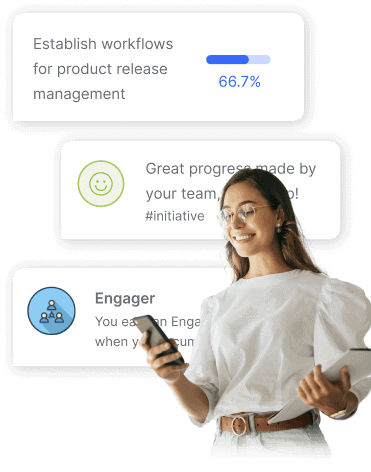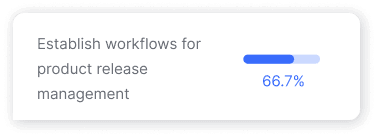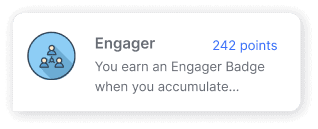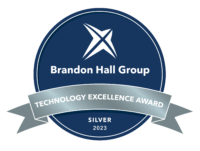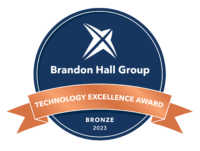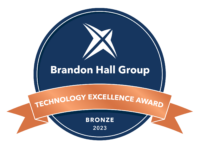Diversity, equity, inclusion, and belonging (DEIB) have become essential pillars of successful businesses in today’s increasingly globalized and interconnected world. Companies that prioritize these initiatives not only create a more diverse workplace but also foster an environment where individuals from all backgrounds feel valued and empowered to reach their full potential. Mastering DEIB strategies is vital for organizations looking to attract top talent, improve employee engagement and satisfaction rates, and ultimately achieve long-term success. This page will dive into the importance of building a better workplace through effective DEIB strategies.
The Current State of DEIB in the Workplace
The current state of DEIB in the workplace is marked by both progress and persistent challenges. Many organizations have recognized the imperative to embrace DEIB as a strategic priority, acknowledging its role in fostering innovation, enhancing employee satisfaction, and ultimately driving sustainable success. Initiatives promoting diversity recruitment, gender equality, and cultural sensitivity training have gained traction.
However, disparities persist, with certain groups facing systemic barriers to career advancement and fair compensation. The imperative for organizations is not only to celebrate diversity on a superficial level but to embed it within their core values, policies, and practices. As we navigate this landscape, ongoing efforts are required to dismantle unconscious biases, create inclusive cultures, and ensure that all employees feel a genuine sense of belonging.
The journey toward achieving comprehensive DEIB in the workplace demands continual self-reflection, commitment, and a collective effort to address the existing gaps and cultivate an environment where diversity is acknowledged and fully embraced.
What is DEIB in the Workplace?
In today’s dynamic and interconnected business landscape, Diversity, Equity, Inclusion, and Belonging (DEIB) are foundational pillars that shape organizational culture and drive success and innovation. Let’s delve into the essence of DEIB and understand each component:
Diversity: Embracing Differences
Diversity in the workplace encompasses a spectrum of characteristics, including but not limited to race, ethnicity, gender, age, sexual orientation, physical abilities, and cultural backgrounds. It’s about recognizing and valuing the unique perspectives and experiences each individual brings to the table. By fostering diversity, organizations can tap into a rich tapestry of ideas, ultimately fueling creativity and adaptability.
Equity: Ensuring Fairness and Justice
Equity goes beyond equality; it’s about acknowledging and addressing systemic barriers that may hinder certain groups. In the workplace, equity involves creating a level playing field where everyone has access to the same opportunities and resources. This might involve fair compensation, unbiased policies, and an inclusive approach to career advancement, ensuring that each employee has an equitable chance to thrive.
Inclusion: Building a Supportive Culture
Inclusion is the active and intentional effort to ensure that diverse voices are not only present but also heard and valued. It’s about creating an environment where every employee feels respected, appreciated, and empowered to contribute their best work. Inclusive workplaces actively combat biases, both conscious and unconscious, and encourage collaboration, open communication, and a sense of belonging among all team members.
Belonging: Fostering a Sense of Community
Belonging is the emotional component that binds diversity, equity, and inclusion together. It’s about creating a workplace where individuals feel accepted for who they are, can express their authentic selves, and form genuine connections with their colleagues. When employees feel a sense of belonging, they are more likely to be engaged, motivated, and committed to the organization’s success.
Key Components of DEIB
Building a workplace culture rooted in Diversity, Equity, Inclusion, and Belonging (DEIB) involves a multifaceted approach. Let’s delve deeper into each key component to gain a comprehensive understanding and explore actionable strategies:
1. Diversity: Celebrating Uniqueness
Cultural Diversity
Embrace a multitude of cultural backgrounds, traditions, and perspectives to foster a vibrant and inclusive workplace. Encourage employees to share their cultural experiences and celebrate cultural events, creating a sense of unity amid diversity. Consider implementing diversity recruitment strategies to attract talent from a variety of cultural backgrounds.
Gender Diversity
Beyond achieving gender balance, create an environment where individuals of all genders feel empowered to contribute their unique skills. Establish mentorship programs that connect employees with mentors of different genders, providing valuable guidance and fostering mutual understanding. Regularly review policies to ensure they are inclusive and address gender-specific challenges.
Ethnic and Racial Diversity
Actively seek representation from diverse racial and ethnic backgrounds within the organization. Establish partnerships with organizations that focus on promoting diversity in the workforce. Implement training programs that educate employees on the importance of cultural sensitivity, combating microaggressions, and building an inclusive environment.
2. Equity: Fairness Across the Board
Fair Compensation
Implement transparent salary structures and conduct regular pay equity assessments to identify and rectify wage gaps. Communicate openly about compensation policies, ensuring employees understand the criteria for determining salaries. Consider conducting external audits to validate internal equity measures.
Equal Opportunities for Advancement
Create mentorship and sponsorship programs that specifically target underrepresented groups, providing them with guidance and support for career advancement. Regularly assess promotion and development processes to identify and address biases. Establish clear criteria for advancement, ensuring that opportunities are distributed fairly among all employees.
3. Inclusion: Nurturing a Welcoming Environment
Building an Inclusive Culture
Promote inclusivity through leadership by showcasing diverse role models and advocates. Foster an environment where employees feel comfortable expressing their identities without fear of judgment. Conduct regular diversity and inclusion training sessions for all employees to cultivate awareness and empathy.
Mitigating Unconscious Biases
Offer workshops and training programs that focus on identifying and addressing unconscious biases. Encourage employees to challenge their assumptions and engage in an open dialogue about bias. Implement anonymous recruitment processes to reduce the impact of unconscious biases in hiring decisions.
4. Belonging: Creating a Sense of Community
Creating a Sense of Belonging
Develop Employee Resource Groups (ERGs) that provide a platform for individuals with shared identities or experiences to connect. Celebrate diversity through events and initiatives that highlight various cultural observances. Solicit feedback from employees and incorporate their input into decision-making processes to foster a sense of ownership and belonging.
Supportive Work Environment
Implement flexible work arrangements and mental health support programs to accommodate diverse needs. Encourage leadership to actively communicate support for work-life balance. Provide resources for employees to access counseling services and wellness programs. Recognize and celebrate accomplishments and milestones to reinforce a positive and supportive workplace culture.
By actively addressing these aspects of diversity, equity, inclusion, and belonging, organizations can move beyond rhetoric and cultivate an environment where every employee feels valued, respected, and able to contribute their best work.
Benefits of Embracing DEIB
Embracing DEIB is not just a moral imperative; it is a strategic investment that yields a multitude of benefits for organizations. Here’s a closer look at the transformative advantages of prioritizing DEIB in the workplace:
Enhanced Creativity and Innovation
A diverse and inclusive environment fosters a broad spectrum of perspectives and ideas. This diversity of thought becomes a catalyst for creativity and innovation, propelling organizations to find novel solutions, products, and services that resonate with a diverse market.
Attracting and Retaining Top Talent
A commitment to DEIB is a powerful magnet for attracting diverse and skilled talent. Inclusivity sends a clear message that the organization values the unique contributions of each individual, creating a workplace where employees feel seen, heard, and appreciated. This, in turn, boosts employee retention and loyalty.
Improved Decision-Making
Diverse teams bring a variety of experiences and viewpoints to the decision-making table. This diversity enhances the quality of decisions by mitigating groupthink and encouraging a more comprehensive evaluation of potential outcomes.
Increased Adaptability and Resilience
Inclusive cultures promote an openness to change and a willingness to adapt to evolving circumstances. Teams that embrace DEIB are more resilient in the face of challenges, as they draw on a range of perspectives to navigate complex situations and find effective solutions.
Enhanced Reputation and Brand Image
Consumers and stakeholders increasingly expect organizations to champion social responsibility. A commitment to DEIB not only aligns with these expectations but also enhances an organization’s reputation and brand image. Companies that prioritize DEIB are often perceived as ethical, forward-thinking, and socially conscious.
Greater Employee Engagement and Productivity
Employees who feel a sense of belonging and inclusion are more likely to be engaged and motivated. This heightened engagement translates into increased productivity, as individuals are inspired to contribute their best work when they feel valued and supported.
Cultural Competence and Global Market Penetration
DEIB initiatives cultivate cultural competence among employees, enabling organizations to navigate global markets more effectively. Understanding and respecting diverse cultures become invaluable assets, facilitating successful expansion and collaboration on a global scale.
Legal and Ethical Compliance
A commitment to DEIB not only aligns with legal and ethical standards but also helps organizations stay ahead of evolving regulations. By creating fair and inclusive policies, organizations mitigate the risk of legal challenges and demonstrate a commitment to ethical business practices.
How to Foster Diversity, Equity, Inclusion and Belonging?
Creating a workplace culture that truly embodies DEIB requires intentional and sustained efforts. Here’s a comprehensive process on how organizations can actively foster these crucial elements:
Leadership Commitment
Cultivate a top-down commitment to DEIB. Leaders should actively participate in DEIB initiatives, demonstrating a genuine commitment to change. Embed these values in the organization’s mission, vision, and strategic objectives. Establish diversity and inclusion as key performance indicators for leadership.
Training and Education
Implement ongoing, comprehensive training programs to increase awareness of DEIB issues. Conduct workshops addressing unconscious biases, cultural competence, and inclusive leadership. Encourage employees to participate in continuous learning opportunities to stay informed about evolving best practices in DEIB.
Diverse Hiring Practices
Revise job descriptions to focus on skills and competencies rather than traditional qualifications. Incorporate blind recruitment strategies, such as anonymizing resumes during the initial review process, to mitigate biases. Actively seek out diverse talent pipelines and partnerships with organizations supporting underrepresented groups.
Mentorship and Sponsorship Programs
Facilitate mentorship programs that connect employees across different backgrounds, fostering a culture of mutual learning and support. Sponsorship programs, where senior leaders actively advocate for the career advancement of underrepresented individuals, can be particularly impactful in breaking down barriers to progression.
Employee Resource Groups (ERGs)
Encourage the formation of ERGs that provide a platform for employees to connect based on shared identities or experiences. Support ERGs with resources, budget, and leadership buy-in. These groups play a crucial role in building a sense of community, fostering inclusivity, and providing valuable insights to organizational leadership.
Review and Revise Policies
Conduct regular reviews of organizational policies to ensure they align with DEIB principles. Solicit feedback from employees, especially from underrepresented groups, to identify potential blind spots in policies. Establish mechanisms for continuous improvement and ensure that policies are accessible to all employees.
Transparent Communication
Foster open and transparent communication about DEIB initiatives at all organizational levels. Regularly update employees on progress, share success stories, and acknowledge challenges. Establish dedicated communication channels, such as newsletters or town hall meetings, to ensure that employees are informed and feel included in the organization’s DEIB journey.
Inclusive Leadership Development
Prioritize the development of inclusive leadership skills at all levels. Offer training programs for leaders that focus on creating inclusive teams, fostering psychological safety, and addressing bias in decision-making. Encourage leaders to participate in mentoring programs to enhance their understanding of the challenges faced by diverse employees.
Celebrating Diversity
Incorporate diverse perspectives into organizational decision-making processes. Celebrate cultural observances, heritage months, and other diversity-related events to create a culture that appreciates and values differences. Recognize and showcase the achievements of employees from diverse backgrounds to reinforce the organization’s commitment to inclusivity.
Continuous Monitoring and Improvement
Regularly assess the impact of DEIB initiatives through surveys, focus groups, and key performance indicators. Use this feedback to identify areas for improvement and adjust strategies accordingly. Establish a feedback loop that involves employees at all levels, creating a collaborative approach to ongoing DEIB enhancement.
Measuring DEIB in the Workplace
Assessing the effectiveness of DEIB initiatives requires a thoughtful and comprehensive approach. Measuring DEIB goes beyond counting numbers; it involves evaluating the impact of policies, cultural shifts, and the overall employee experience. Here are key strategies for effectively measuring DEIB in the workplace:
Establish Key Performance Indicators (KPIs)
Define specific, measurable, and realistic key performance indicators aligned with DEIB goals. These might include metrics related to diversity in recruitment, pay equity, employee engagement, and representation at various organizational levels. Regularly track and analyze these KPIs to gauge progress over time.
Conduct Regular Diversity Audits
Implementing regular diversity audits provides a comprehensive snapshot of the organization’s current state of diversity. This involves evaluating recruitment processes, employee development, and advancement opportunities to identify any existing biases or barriers that may impede DEIB goals.
Employee Surveys and Feedback
Engage employees through anonymous surveys to gather insights into their perceptions of the workplace culture regarding DEIB. Inquire about their sense of inclusion, satisfaction with diversity initiatives, and experiences of belonging. This direct feedback provides valuable qualitative data to complement quantitative metrics.
Review Promotion and Advancement Data
Examine data related to promotions and career advancements to ensure that these opportunities are distributed equitably. Analyze whether employees from all backgrounds have equal access to career development programs and mentorship opportunities, promoting an inclusive path for professional growth.
Evaluate Leadership Representation
Assess the representation of diverse groups at leadership levels. Monitor the diversity of executive teams and boards to ensure that decision-making bodies reflect the varied perspectives present within the organization. This promotes equity and contributes to more informed and inclusive decision-making.
Incorporate Intersectionality
Recognize and account for the intersectionality of identities within the workforce. Consider how different aspects of an individual’s identity, such as race, gender, and age, intersect and impact their experiences. This nuanced approach ensures that DEIB initiatives address the unique challenges faced by individuals with intersecting identities.
Analyze Turnover and Retention Rates
Examine turnover rates to understand if there are disparities among different demographic groups. Identify potential patterns that may indicate challenges related to DEIB and take targeted actions to address retention concerns. A more inclusive workplace often correlates with improved employee retention.
Training Program Effectiveness
Evaluate the impact of DEIB training programs. Assess whether these initiatives contribute to increased awareness, reduced biases, and a more inclusive workplace culture. Regularly update and adapt training content to address evolving challenges and foster ongoing learning.
External Partnerships and Community Engagement
Measure the organization’s involvement in external DEIB initiatives, partnerships, and community engagement. Evaluate the impact of these activities on the broader community and assess how they align with the organization’s DEIB values.
Benchmarking Against Industry Standards
Compare DEIB metrics against industry benchmarks to gain a broader perspective on the organization’s standing. Identify areas where the organization excels and areas that may require additional focus or improvement.
How does Technology Support DEIB?
In the contemporary workplace, technology plays a pivotal role in advancing DEIB initiatives, offering innovative solutions to foster a more inclusive and equitable environment. Here are several ways technology contributes to the progression of DEIB:
Diverse Hiring Platforms
Technology facilitates the creation and utilization of diverse hiring platforms that broaden the talent pool. AI-powered recruitment tools can help eliminate bias in the hiring process by anonymizing resumes, ensuring that candidates are evaluated based on their skills and experience rather than demographic details.
Inclusive Communication Tools
Collaboration and communication platforms enable seamless interaction among team members regardless of geographical location. These tools offer inclusive features such as real-time language translation, accessibility options, and virtual meeting functionalities that accommodate different working styles and abilities.
Data Analytics for Diversity Metrics
Technology empowers organizations to gather and analyze data related to diversity metrics. By leveraging analytics tools, companies can track the representation of various demographics across different levels, identifying areas for improvement and measuring the effectiveness of DEIB initiatives over time.
Learning and Development Platforms
Online learning platforms and e-learning modules provide accessible and flexible opportunities for employees to engage in diversity and inclusion training. These platforms often include interactive content, case studies, and simulations to foster a deeper understanding of DEIB principles among employees at all levels.
Virtual Reality for Empathy Training
Virtual Reality (VR) technologies offer immersive experiences that can be utilized for empathy training. This innovative approach allows employees to step into the shoes of others, fostering a better understanding of different perspectives and promoting empathy within the workplace.
Anonymous Reporting Systems
Technology supports the implementation of anonymous reporting systems, creating a safe space for employees to report incidents of discrimination or bias. These systems contribute to a transparent and accountable organizational culture, encouraging employees to speak up without fear of retaliation.
AI for Bias Detection
Artificial Intelligence (AI) can be employed to detect and mitigate biases in various organizational processes, from recruitment to performance evaluations. AI algorithms can identify patterns of bias and assist in creating fairer and more equitable systems by minimizing the impact of unconscious biases.
Employee Resource Group Platforms
Technology facilitates the creation and management of Employee Resource Groups (ERGs) through dedicated platforms. ERG platforms provide a space for employees with shared identities or interests to connect, organize events, and collaborate on initiatives that promote diversity and inclusion.
Flexible Work Solutions
Remote work technologies and flexible scheduling tools contribute to a more inclusive workplace by accommodating diverse needs and preferences. This flexibility enables employees to balance work and personal responsibilities, fostering a culture that values individual well-being
Conclusion
Cultivating a workplace that truly embraces diversity, equity, inclusion, and belonging is not just a lofty goal; it is a necessary evolution for the success and sustainability of any organization. By fostering a culture where every individual feels valued, heard, and respected, businesses can unlock the full potential of their teams. Embracing diversity brings forth a wealth of perspectives, ideas, and talents, fostering innovation and creativity. It is not just a moral imperative but a strategic move that contributes to a more robust, adaptable, and resilient workplace.
Subscribe To The Engagedly Newsletter


